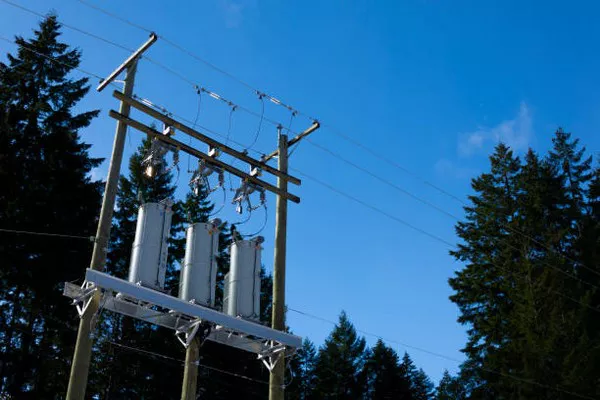In the realm of physics, few concepts possess the transformative power and significance as that of a transformer. Reverberating with the symphony of electromagnetic magic, transformers play a pivotal role in the modern world, propelling industries, energizing homes, and enabling the seamless distribution of electrical energy. Delving into the heart of transformers unravels a tale of electromagnetic induction, energy efficiency, and the art of voltage transformation.
The Essence of Electromagnetic Induction
At its core, a transformer thrives on the principle of electromagnetic induction—a phenomenon that underscores the interplay between magnetic fields and electric currents. It’s a dance where changing magnetic fields invoke electric currents, and vice versa. This elegant phenomenon, championed by Michael Faraday’s laws of electromagnetic induction, kindles the heart of transformers, orchestrating their mesmerizing prowess.
Anatomy of a Transformer: Wires, Coils, and Cores
A transformer is an intricate apparatus, harmonizing a symphony of components to achieve a specific objective—transforming voltage levels. It is composed of two coils, often referred to as the primary coil and the secondary coil. These coils, wound meticulously with insulated wire, are arranged in proximity. Nestled within this arrangement is a ferromagnetic core, a magnetic pathway that ensures the seamless transference of magnetic flux between the coils.
The Enigmatic Voltage Transformation
At the epicenter of a transformer’s enchantment lies the remarkable ability to alter voltage levels with unparalleled efficiency. When an alternating current (AC) courses through the primary coil, it spawns a fluctuating magnetic field within the ferromagnetic core. This dynamic magnetic field elegantly dances across the secondary coil, inducing a voltage across its terminals. The key here is the ratio of turns in the primary and secondary coils, often denoted as the “turns ratio.” This ratio shapes the transformation of voltage levels—augmenting or diminishing the voltage as the need arises.
Step-Up and Step-Down: Unveiling the Marvels
Transformers don’t merely change voltage levels; they wield the power to elevate or attenuate energy in a process termed “step-up” and “step-down.” A “step-up” transformer magnifies the voltage from the primary coil to the secondary coil, often employed in scenarios like power transmission where high-voltage transmission is favored for efficiency. Conversely, the “step-down” transformer reduces the voltage from the primary coil to the secondary coil, catering to scenarios where lower voltage is the need, such as household appliances.
Conservation of Energy and Efficiency
Delving into the intricacies of transformers casts light on a fundamental law—the conservation of energy. The output power is, to a large extent, equivalent to the input power, minus the minor losses incurred due to factors like resistance and core losses. This conservation underscores the precision of transformers, enabling energy transfer with remarkable efficiency.
The Symphonic Dance of Alternating Current
Transformers waltz harmoniously with alternating current (AC). Unlike direct current (DC), where voltage remains constant, AC oscillates in a sinusoidal pattern. The allure of AC lies in its ability to smoothly induce magnetic flux changes within the transformer’s core. This rhythmic oscillation seamlessly weaves the magnetic magic necessary for electromagnetic induction.
The Silent Heroes of Electricity Distribution
While transformers hold the limelight in various applications, their role in electricity distribution is unparalleled. Power generation plants produce electricity at high voltages for efficiency. However, these voltages are impractical for household consumption. Herein, transformers perform a heroic role, orchestrating the seamless transition of energy. Substations employ “step-up” transformers to elevate voltage for efficient transmission over long distances, only to be met by “step-down” transformers before reaching homes.
Beyond the Mundane: Transformers in Innovation
While transformers champion power distribution, they also embrace innovative domains. In the realm of electronics, transformers find a home in audio equipment, modulating signals and ensuring audio fidelity. High-frequency transformers transform energy in devices like inverters, powering everything from your smartphone charger to renewable energy sources. Magnetic resonance imaging (MRI) systems in the medical field employ specialized transformers, unraveling the human body’s mysteries with precision.
Conclusion: Powering Knowledge with Transformers
In the tapestry of physics, transformers stand as beacons of electromagnetic marvel, epitomizing the synergy between energy and innovation. From the rhythmic dance of alternating current to the precision of voltage transformation, transformers underscore the symphony of electromagnetic induction. Their silent orchestration resonates across industries, lighting up our homes, powering our devices, and pioneering a future shaped by efficient energy distribution. With each flicker of a light bulb and every hum of a device, transformers echo the remarkable fusion of science and engineering—an enduring testament to the transformative power of knowledge.

